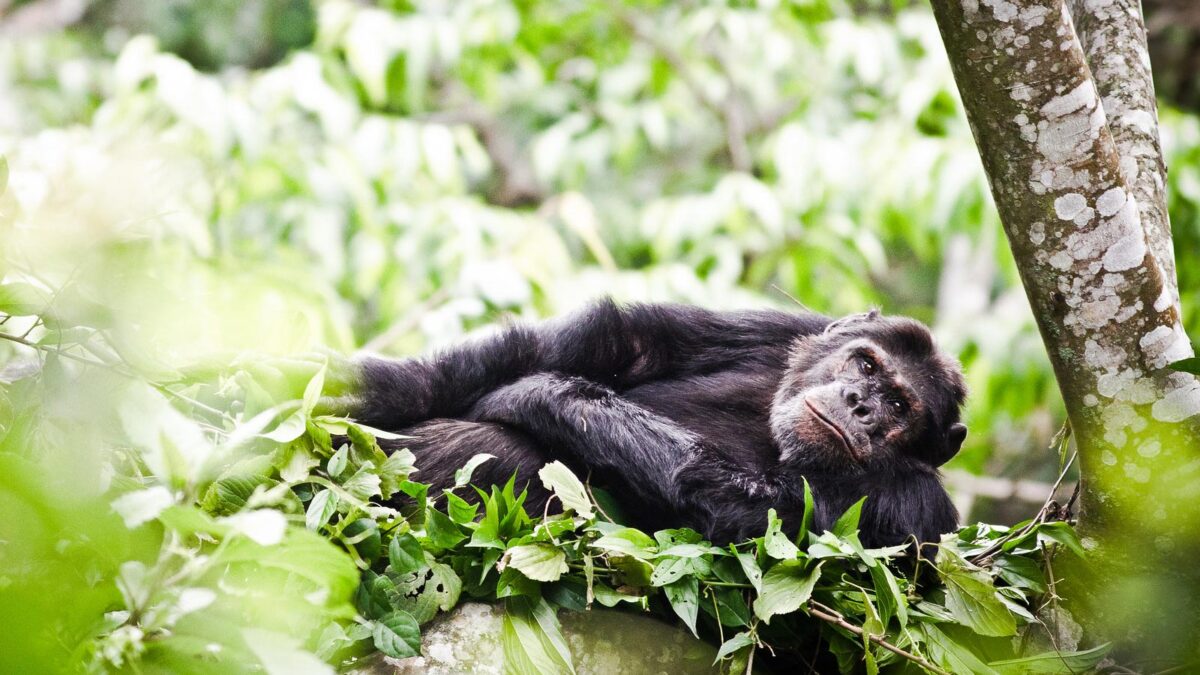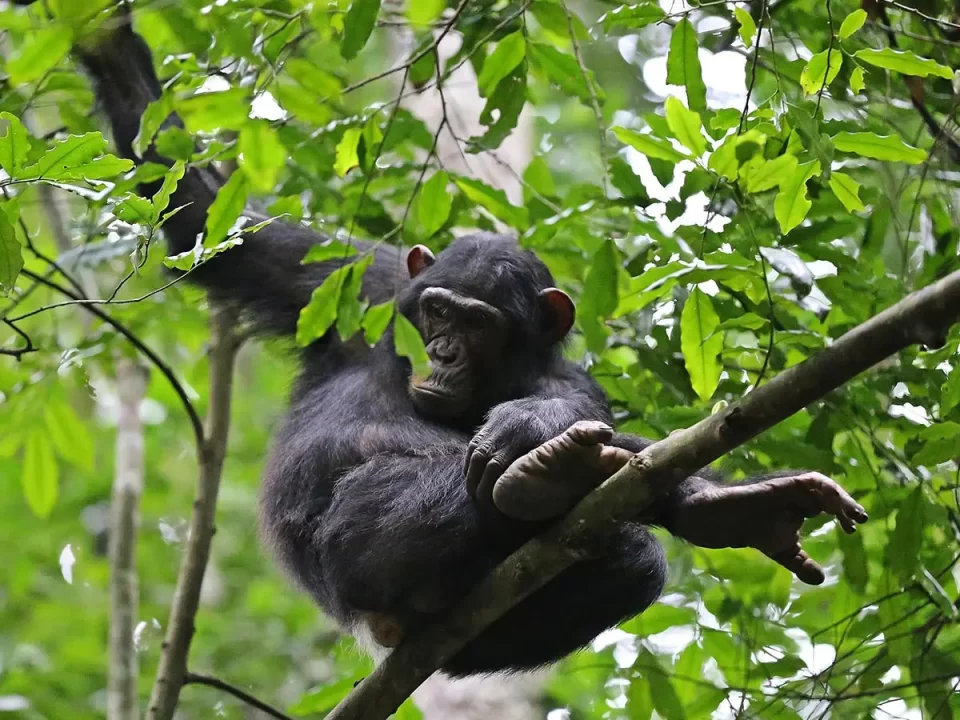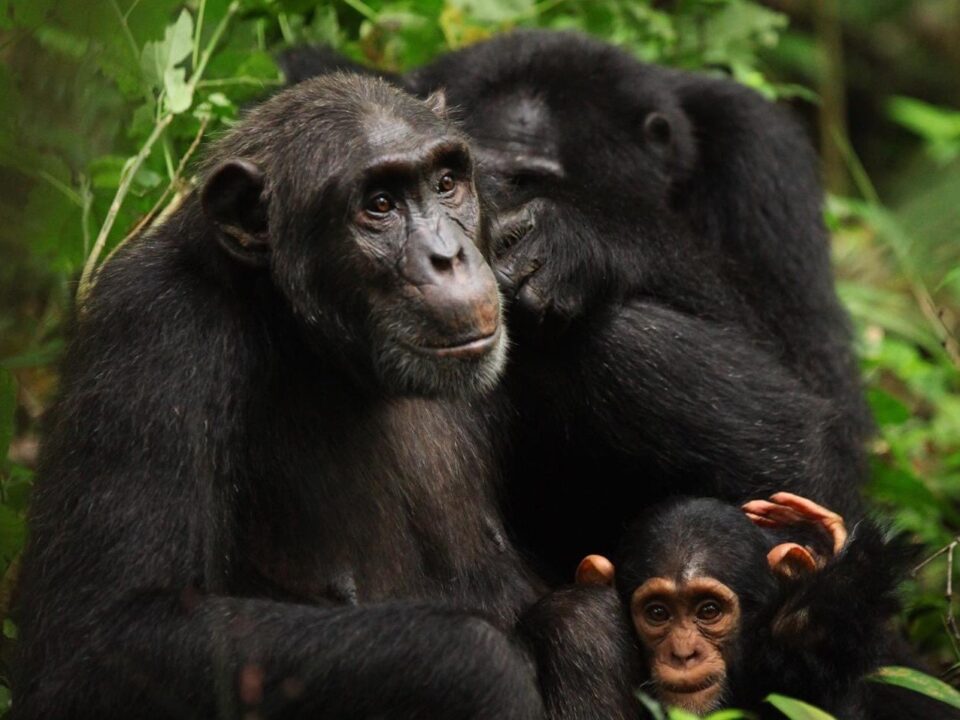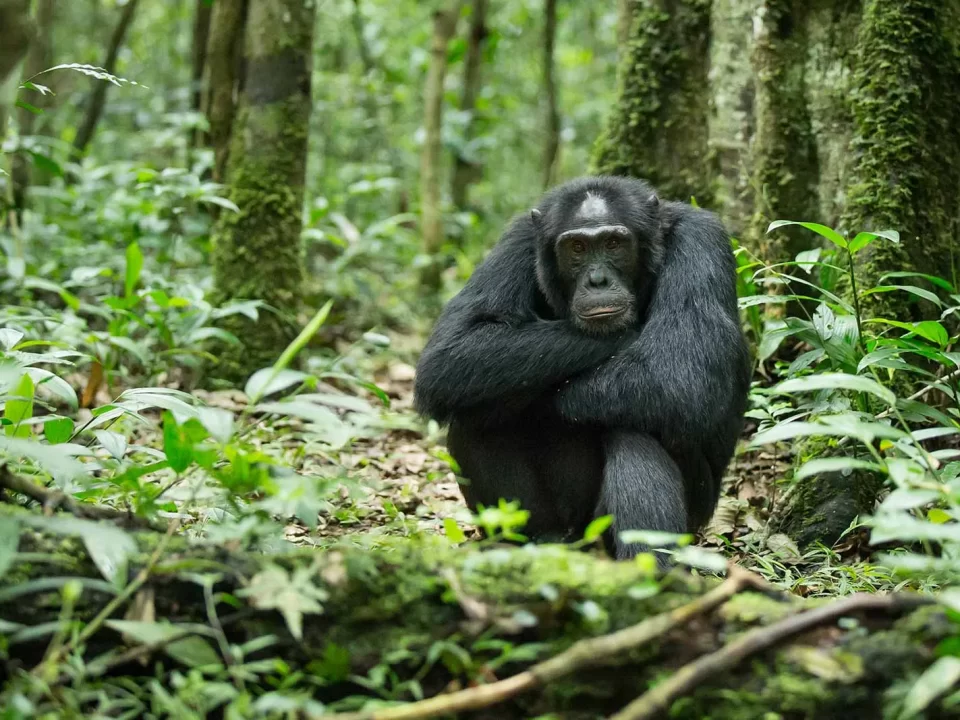Best Time for Chimpanzee Trekking at Gishwati-Mukura National Park

Booking Chimpanzee Trekking Permits for Gishwati-Mukura National Park
March 27, 2023
Planning a Luxury Gorilla Safari to Buhoma During Peak Season
March 28, 2023Best Time for Chimpanzee Trekking at Gishwati-Mukura National Park
Established in 2015 by merging Gishwati forest and Mukura forest, Gishwati-Mukura National Park is Rwanda’s newest national park, covering an area of 34 square kilometers. It is also the least visited national park in Rwanda. Located on the ridge that separates the Congo and Nile water catchment areas, the park is situated along the diverse Albertine Rift.
Gishwati-Mukura National Park is a haven for various primates, birds, reptiles, and tree species, including the endangered Eastern Chimpanzees. Visitors can observe these intelligent primates living alongside other primates such as golden monkeys, L’Hoest’s monkeys, and blue monkeys.
The park also boasts over 232 bird species, including the Albertine endemic species, making it one of the best places for birdwatching in Rwanda.
However, the park’s conservation journey has not been without challenges. The area was almost depleted due to resettlement, livestock farming, and illegal mining practices by the neighboring communities. The park’s gazettement in 2015 has since promoted conservation and helped redress the ecosystem.
Today, Gishwati-Mukura National Park is a thriving ecosystem that provides a safe haven for endangered species and offers visitors the opportunity to witness the beauty and diversity of Rwanda’s wildlife.
Overall, a visit to Gishwati-Mukura National Park offers a unique opportunity to witness the rich biodiversity of Rwanda and discover the fascinating world of chimpanzees and other primates in their natural habitat.
Chimpanzee trekking is a popular activity in Gishwati-Mukura National Park, and visitors can undertake it all year round. However, the period from October to May, which coincides with the rainy season, is considered the best time to trek and spot chimpanzees in the park. During this time, the chimpanzees tend to stay closer to their habitats, as food is abundant, which makes it easier to sight them. However, due to the wet conditions, the trails can be slippery and the trekking experience may not be as smooth as during the dry season.
On the other hand, the drier months of June to September may be more favorable for chimpanzee trekking at Gishwati-Mukura National Park. The trails are drier, and the vegetation is not as thick, which makes it easier to navigate the forest. Nonetheless, visitors should note that the chimpanzees may be more dispersed during this time as they search for food, and sighting them may require more effort.
Chimpanzee trekking is the main activity at Gishwati-Mukura National Park, offering visitors the opportunity to spot these intelligent primates and other species such as golden monkeys, blue monkeys, L’Hoest’s monkeys, and baboons. However, the sighting of these primates depends on luck and the trail taken on the day of the trek.
As with other parks, chimpanzee trekking at Gishwati-Mukura National Park begins in the morning with a briefing about the dos and don’ts, followed by a guided trek by one of the park rangers. Visitors then venture into the forest to search for the chimpanzees and spend an hour in their company upon encounter. Along the trek, visitors may also spot other wildlife such as duikers and birds.
Exploring Other Exciting Activities at Gishwati-Mukura National Park
Discovering the Rich Primate Diversity at Gishwati-Mukura National Park
If you are a primate enthusiast, Gishwati-Mukura National Park is the perfect destination for you. Primate tracking is one of the major activities in the park, and visitors have the opportunity to encounter various primate species, including golden monkeys, blue monkeys, L’Hoest’s monkeys, and baboons.
The primate tracking activity usually starts in the morning with a briefing on the dos and don’ts. After that, visitors are guided by experienced park rangers into the forest to search for the primates. While tracking, visitors can also spot other wildlife, such as duikers and birds.
Exploring the rich primate diversity of Gishwati-Mukura National Park is a unique and unforgettable experience. You get to witness the playful and curious behavior of the primates and learn more about their habitat and conservation efforts in the park.
Bird Watching in Gishwati-Mukura National Park
If you are a bird lover, Gishwati-Mukura National Park should definitely be on your bucket list. This park is renowned as one of the best places for bird watching in Rwanda, with over 232 recorded bird species. Among these species, 15 can only be found in the Albertine Rift, making it a unique opportunity to spot some rare and exclusive birds.
Some of the rare bird species found in the park include the Grey Crowned Crane, Martial Eagle, Mountain Yellow Warblers, Purple-breasted Sunbird, Red-throated Alethe, Regal Sunbird, Ruwenzori Batis, Ruwenzori Turaco, Weaver birds, Wood hoopoes, Strange weavers, and the Stripe-breasted Tit.
Bird watching in Gishwati-Mukura National Park is an incredible experience, as you get to witness the beauty and diversity of these winged creatures in their natural habitat. You can also learn about the conservation efforts in the park to protect these magnificent birds for future generations to enjoy.
Exploring the Natural Beauty of Gishwati-Mukura National Park: A Guided Nature Walk
Experience the natural beauty of Gishwati-Mukura National Park up close on a guided nature walk. The park boasts a variety of established trails for visitors to explore the forest and its inhabitants, including butterflies, chameleons, insects, birds, and primates. With over 60 tree species in the park, you’ll encounter beautiful bamboo, ferns, mahogany, orchids, and even newly introduced species like dombeya torrida, eucalyptus, hagenia abyssinica, Macaranga, and polyscias fulva. This guided nature walk is the perfect way to immerse yourself in the park’s stunning natural environment and witness its remarkable biodiversity.
Biking and Cycling Adventure.
Experience the best biking adventure in East Africa as you cycle along the scenic shorelines of Lake Kivu and through the lush Nyungwe forest. But that’s not all! The Congo Nile Trail also offers unique community-based activities that allow you to immerse yourself in the local culture.
Stay on a farm, witness live cultural dances, and learn the traditional art of handicraft-making. You can even try beekeeping, take a tea plantation tour, and discover the secrets of traditional healers who use natural plants to complement modern medicine. Through these activities, you’ll have the chance to learn how the local communities coexist with the wildlife and gain a deeper appreciation of their way of life.
Hiking to the Kazeneza Waterfall in Gishwati-Mukura National Park
Experience the stunning beauty of Gishwati-Mukura National Park by taking a hike to the magnificent Kazeneza Waterfall. This is one of the best hiking trails in the park, offering breathtaking views and the opportunity to witness the beauty of nature up close. The waterfall is located in the middle of the park and provides a perfect spot for sightseeing and enjoying the peaceful ambiance of the park.
Getting to Gishwati-Mukura National Park
To access Gishwati-Mukura National Park, you can take a two-hour drive from Kigali. Alternatively, there is an option for a chartered flight from Kigali to the park. If you are interested in combining your visit with gorilla trekking in Uganda, you can also access the park from Bwindi Impenetrable Forest National Park and Mgahinga Gorilla National Park. This provides an opportunity to explore both parks and enjoy an unforgettable experience.
Accommodation Options in Gishwati-Mukura National Park
As Gishwati-Mukura National Park is relatively new, there are limited accommodation options available. However, Gishwati Lodge is a luxury lodge that offers the best lodging experience in the park. The lodge has six luxury chalets that can host a maximum of 15 guests at a time. It is advisable to make reservations at least a month in advance of your visit to the park. If you prefer to stay closer to the park, you can consider staying in Kivu, Rubavu or Volcanoes National Park. The drive from these locations to the park takes only 30 minutes.




